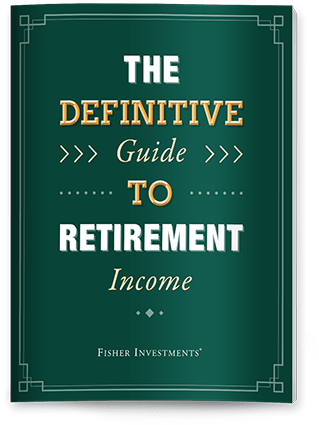Personal Wealth Management / Politics
The Obligatory Debt Ceiling Update
Putting recent news and less-than-news around America’s statutory debt limit into proper context.
Editors’ Note: MarketMinder is politically agnostic. We favor no party nor any politician and assess developments for their potential economic and market impact only.
Morphing fears are a time-honored feature of young bull markets, so we shouldn’t be surprised that within just six weeks the top fear has flipped from the debt ceiling to banks and now, arguably, back to the debt ceiling. All because of a handful of “news,” some of which seemingly stretches the definition of that term. Predictably, people are dismissing stocks’ resilience as the market overlooking danger or just plain being wrong—a sign the pessimism of disbelief underpinning new bull markets is alive and well.
The biggest actual news this week is that House Republicans have released their draft debt ceiling bill, which GOP leadership views as a starting point for negotiations with Senate Democrats and the Biden administration. You might think this bit of progress would fall in the “good news” column, as this isn’t the last minute, giving both sides plenty of time to mark the plan up and arrive at a centrist consensus no one likes. But the gulf is wide enough that few expect it to go anywhere quickly.
That, evidently, is a problem in the wake of one prominent investment bank’s latest estimate of the “X” date, which it places in June. Somehow this non-news dominated headlines globally mid-week as some earthshattering change, which we found mystifying considering US Treasury Secretary Janet Yellen warned a June deadline was possible way back in January.1 A private-sector reiteration of that estimate doesn’t strike us as too newsworthy, especially since the analysis appears to exclude some variables that could push the deadline out a bit. Nor is it really news that House GOP leadership wants to push spending cuts while Senate Democratic leadership and the Biden administration want a clean increase.
Also right on schedule, a bipartisan gang in the House, optimistically calling themselves the Problem Solvers Caucus, has crafted a back-up plan that would kick the can to December 31—and potentially to late February 2025 if Congress passes some procedural fiscal reforms later this year. Some say a shorter deadline makes this likelier to pass, although that seems like a stretch given it can’t come to a floor vote without Speaker Kevin McCarthy’s approval—and he is busy spearheading negotiations over the flagship GOP bill. His goal is to round up sufficient Republican votes for his bill, pass it and present it to Democratic Senators as the official House position. Putting a competing bipartisan bill in front of legislators would muddy the waters. Even if it did hit the floor, it seems unlikely to get much support, as it wouldn’t let either party get a win they can sell to voters and fundraisers in 2024.
You might notice that all of the above analysis is political, not economic. That is because this is a 100% political issue. Neither the spending cuts proposed by the GOP nor the deficit itself are looming threats to the American economy in the here and now. Cut if you like, don’t if you don’t. We doubt it means much to markets.
And, perhaps most importantly, as we have written many, many times over the years, for all the talk of the debt ceiling potentially triggering a “default,” that is a misnomer. The Treasury’s running out of room under the debt ceiling doesn’t mean an actual default is nigh. There is a lot of talk about the government defaulting on its “obligations,” but default means one thing and one thing only: failing to pay interest or principal on maturing debt. Principal is easy, as the Treasury can issue new debt to refinance maturing issues. That leaves interest, which incoming revenues cover. Contrary to most commentary, the Treasury can prioritize these interest payments ahead of all others. The Supreme Court long ago interpreted the 14th Amendment’s public debt clause as requiring them to do so. Now, of course, the government runs a deficit, so some spending would be forcibly curtailed in this hypothetical scenario. But that renders a debt ceiling breach analogous to a partial government shutdown, which does the same. No shutdown ever singlehandedly caused a recession or bear market.
In short, we see a big gap between sentiment and reality here. Pundits continue to warn the market is overlooking risk, whether they are citing stock prices or US Treasury CDS spreads (i.e., default insurance costs). But given how widely discussed this issue is—and given markets reflect all widely known information—that warning doesn’t add up. Markets can’t be blind to an issue that has hogged headlines for months. They have seen all the handwringing and all the forecasts. They have also seen the history of Congress raising the debt ceiling well over 100 times, often after the alleged deadline. Maybe this time is different, but we strongly doubt it. We likely won’t get a deal in the next couple of weeks, as it is too early. But Congress has always gotten the job done, usually at 11:59:59 or a few minutes after. Re-election is a powerful incentive to compromise, after all.
Either way, we don’t think markets are wrong to be looking past this. We think they are correctly seeing through the noise and weighing fundamentals over the next 3 – 30 months. That doesn’t rule out volatility as the deadline approaches, but it does argue against a debt ceiling standoff sending stocks to new bear market lows, in our view.
1 “Yellen Warns of US Default Risk by Early June, Urges Debt Limit Hike,” Kanishka Singh and David Lawder, Reuters, 1/13/2023.
If you would like to contact the editors responsible for this article, please message MarketMinder directly.
*The content contained in this article represents only the opinions and viewpoints of the Fisher Investments editorial staff.
Get a weekly roundup of our market insights
Sign up for our weekly e-mail newsletter.

See Our Investment Guides
The world of investing can seem like a giant maze. Fisher Investments has developed several informational and educational guides tackling a variety of investing topics.





